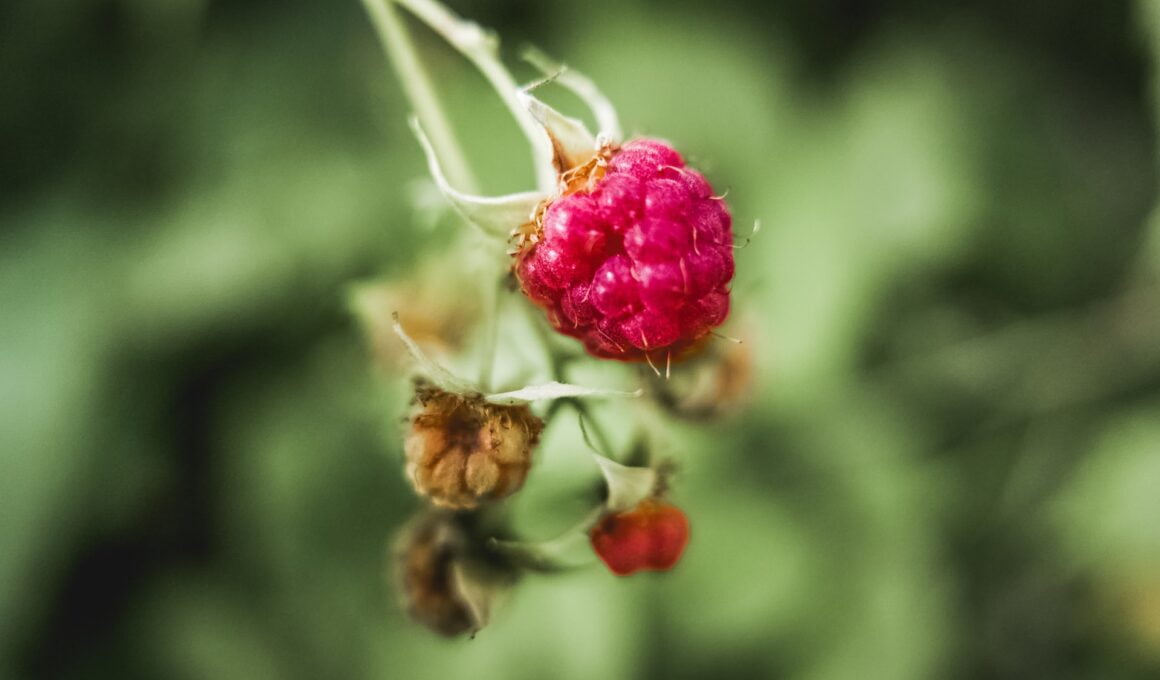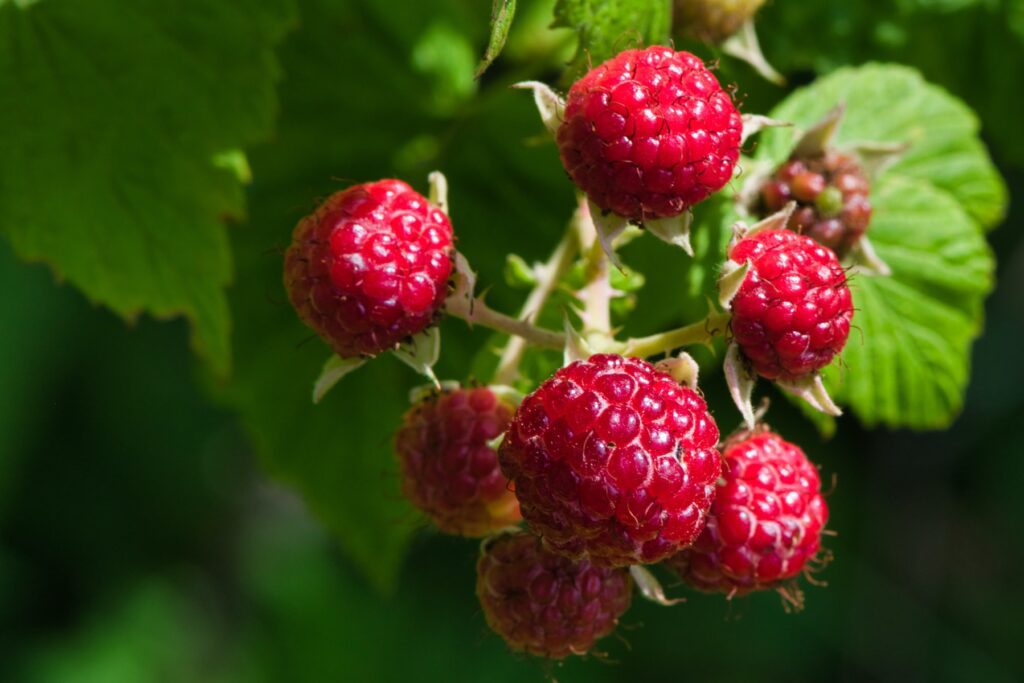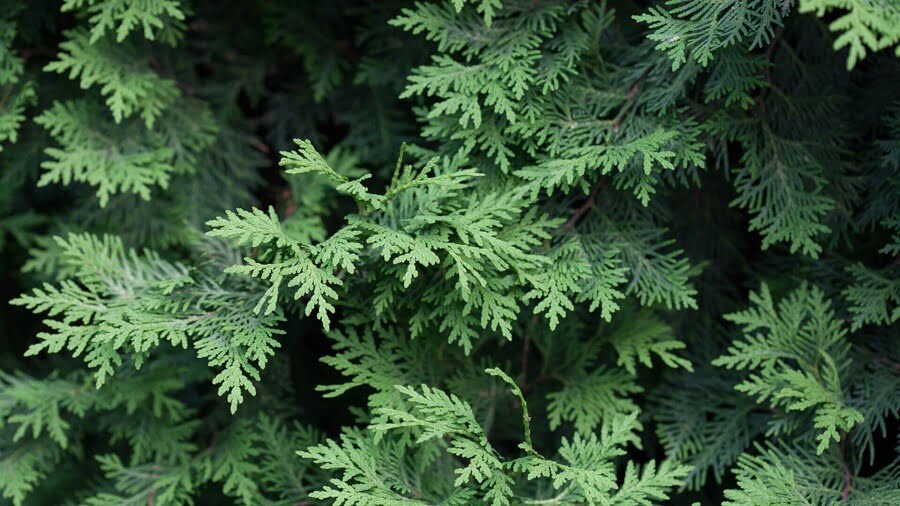Are you interested in growing your own delicious and nutritious raspberries right in your own backyard? Well, you’re in luck! Growing raspberries is not only rewarding but also easy.
In this article, we will guide you through the step-by-step process of successfully growing raspberries in your backyard.
First, you’ll need to choose a sunny spot with well-drained soil and select raspberry plants that are suitable for your hardiness zone.
Then, prepare the soil by blending it with aged compost to provide the plants with essential nutrients. Next, dig a hole and carefully place the roots on a mound, filling it in with soil.
To ensure your raspberry plants thrive, you’ll need to provide them with proper support using a post and wire system. It’s also important to water them regularly during the summer months and reduce watering in winter. Additionally, feeding the plants in the spring through early July will help promote healthy growth and fruit production.
By following these steps and taking care of your raspberry plants, you’ll soon be able to enjoy the bountiful harvest of these delicious fruits right in your own backyard.
So, let’s get started and learn how to grow raspberries like a pro!
Key Takeaways
- Select a spot in full sun with well-drained soil
- Plant raspberry bushes 3-4 feet apart and provide support with a post and wire system
- Water regularly during summer and reduce watering in winter
- Prune annually after the last harvest to increase productivity and reduce disease
Choosing the Right Variety of Raspberries To Grow In Your Backyard
If you want to grow raspberries in your backyard, you should choose the right variety that will thrive in your area and provide you with delicious fruit for years to come. When selecting a raspberry variety, consider your climate and growing conditions.
In Minnesota, some recommended varieties for northern gardens include Autumn Bliss, Caroline, Heritage, and Black Hawk. Autumn Bliss is a red raspberry variety that produces a bountiful harvest in late summer. Caroline is another red variety that’s known for its disease resistance and large, flavorful berries. Heritage is a popular choice for its sweet and juicy red berries that ripen in mid-summer. If you prefer black raspberries, Black Hawk is a great option with its large, firm, and flavorful fruit.
Before making a decision, it’s important to research the specific requirements and characteristics of each variety. Consider factors such as fruiting time, disease resistance, and flavor profile. By choosing the right variety for your backyard, you can ensure a successful raspberry growing experience and enjoy the fruits of your labor for years to come.
Happy raspberry gardening!
Soil and Sunlight Requirements
Choosing the perfect spot in your garden that bathes in glorious sunlight and boasts nutrient-rich soil will set the stage for a bountiful harvest of these luscious, ruby jewels. Raspberries thrive in full sun, so find a location that receives at least six to eight hours of direct sunlight each day. Additionally, make sure the soil is well-drained to prevent waterlogging, which can lead to root rot.
Before planting your raspberry bushes, it’s essential to improve the soil. Raspberries prefer slightly acidic soil with a pH between 5.5 and 6.5. You can achieve this by incorporating organic matter, such as compost or aged manure, into the soil. This will not only provide essential nutrients but also improve its structure and drainage.
When planting raspberries, space them 3 to 4 feet apart to allow for proper air circulation and room for growth. Dig a hole that is twice as wide and deep as the roots, and create a small mound of soil in the center. Place the roots on top of the mound, spreading them out, and then gently fill in the hole with soil, firming it around the roots.
By selecting a sunny spot with well-drained soil and properly preparing the planting area, you’ll create an ideal environment for your raspberry bushes to thrive and produce an abundance of delicious berries for you and your loved ones to enjoy.
Planting Process
In the vibrant rays of the sun, find a sun-kissed spot in your garden where the rich, well-drained soil eagerly awaits the arrival of your raspberry bushes. Before getting started, make sure to choose a location that receives full sun for optimal fruit production.
Once you have found the perfect spot, it’s time to prepare the soil. Start by improving the soil with aged compost to provide the necessary nutrients for your raspberry plants to thrive. Dig a hole twice as wide and deep as the roots of your plants, and create a small mound in the center. Gently place the roots on the mound and fill in the hole with soil, making sure to firm it around the roots.
After planting, cut the canes back to 3 inches to encourage new growth. Remember to water your raspberry bushes regularly, especially during the summer months when they need it the most. Mulching around the plants will help retain moisture and suppress weed growth.
As your raspberry bushes grow, they will need support to prevent wind damage and bending. Consider installing a post and wire system to provide the necessary support. With proper care and attention, your raspberry bushes will reward you with delicious and nutritious berries for years to come.
Watering and Fertilizing
Make sure you water your raspberry bushes regularly, providing them with the hydration they crave to thrive and produce an abundant harvest of succulent berries that will leave your taste buds dancing with delight. Raspberries have a shallow root system, so it’s important to keep the soil consistently moist, especially during the hot summer months. Aim to give your raspberry bushes 1 to 1.5 inches of water per week from flowering until harvest. If you’re experiencing a dry spell, you may need to increase the amount of water you provide.
To help you keep track of your watering schedule, use the following table as a guide:
| Week | Watering Frequency |
|---|---|
| 1-4 | Every 2-3 days |
| 5-8 | Every 4-7 days |
| 9-12 | Every 7-10 days |
| 13+ | Every 10-14 days |
In addition to regular watering, fertilizing your raspberry bushes is essential for their growth and productivity. Before planting, incorporate composted manure into the soil to provide a nutrient-rich foundation. Once your plants are established, feed them with a balanced fertilizer in early spring and again in early July. Miracle-Gro Shake N Feed Tomato, Fruit & Vegetable Plant Food is a great option to ensure your raspberries receive the necessary nutrients for optimal growth.
By providing your raspberry bushes with adequate water and nutrients, you’ll be rewarded with healthy plants and bountiful harvests of delicious berries. Keep in mind that every garden is unique, so it’s important to monitor your plants and adjust your watering and fertilizing routine accordingly. Happy growing!
Support and Trellising
Enhance the growth and productivity of your raspberry bushes by providing them with the proper support and trellising. By implementing a support system, you can ensure that your raspberry canes stay upright, preventing them from bending or breaking under the weight of the fruit. Here are some practical tips to help you support and trellis your raspberry plants:
Install sturdy posts: Begin by installing sturdy wooden or metal posts at the ends and in the middle of your raspberry row. These posts will provide a strong foundation for your trellising system.
Attach wires: Once the posts are in place, attach wires horizontally between them, about 2 to 3 feet apart. These wires will act as a support framework for your raspberry canes.
Tie canes to the trellis: As your raspberry canes grow, gently tie them to the wires using soft plant ties or twine. This will keep the canes upright and prevent them from sprawling on the ground.
Prune and train: Regularly prune your raspberry plants to remove any dead or weak canes. Train the remaining canes to grow along the trellis, ensuring proper air circulation and sunlight exposure.
Maintain the trellis: Regularly inspect and maintain your trellis system, tightening any loose wires and replacing any damaged or rotten posts.
By providing the necessary support and trellising, you’ll not only help your raspberry bushes thrive but also make harvesting easier and more efficient. Your raspberries will thank you by producing an abundance of delicious, juicy fruit for you to enjoy.
Pruning and Maintenance
Discover the key to ensuring the health and productivity of your raspberry bushes by mastering the art of pruning and maintenance. Pruning is an essential practice that promotes new growth, improves air circulation, and reduces the risk of diseases.
Start by pruning your raspberry bushes in early spring before new growth begins. For first-year plants, prune the canes back to 3-4 feet tall to encourage strong growth. Remove any damaged or weak canes as well.
For second-year canes, prune them to the ground after they have finished bearing fruit. This will make room for new canes to grow and produce fruit in the following year.
Regular maintenance is also crucial for the success of your raspberry bushes. Keep the area around the plants free from weeds and remove any dead or diseased canes throughout the growing season. Mulch around the plants with woodchips or straw to retain moisture and prevent weed growth.
Water regularly, especially during hot and dry periods, and provide support for the canes using a trellis or post and wire system. By practicing proper pruning and maintenance techniques, you’ll ensure that your raspberry bushes thrive and produce an abundant harvest year after year.
Pollination and Fruit Production
Bees play a crucial role in the pollination and fruit production of raspberry plants, ensuring a bountiful harvest for your garden. When it comes to raspberry pollination, bees, including bumblebees, honeybees, and other wild bees, are excellent pollinators. These buzzing insects transfer pollen from the male parts of the raspberry flowers to the female parts, allowing the fruit to develop. Without proper pollination, you may end up with fewer and smaller raspberries.
To attract bees to your raspberry plants, create a bee-friendly environment in your backyard. Plant flowers that attract bees, such as lavender, marigolds, and sunflowers, near your raspberry bushes. Provide a water source, like a shallow dish with rocks for them to land on, to keep the bees hydrated. Avoid using pesticides and chemicals that can harm these important pollinators.
To maximize fruit production, choose raspberry varieties that are known for their high yields. Red and yellow raspberry varieties produce new canes from the base of the floricanes, while black and purple raspberries only produce primocanes from the base of the floricanes. Some everbearing red raspberries can even produce fruit in the first year and a summer crop in the second year.
By creating a bee-friendly environment and selecting the right raspberry varieties, you can ensure successful pollination and fruitful harvests in your backyard. Enjoy the sweet rewards of your hard work and the valuable contribution of these buzzing pollinators.
Harvesting and Storage
To make the most of your fruitful harvest, get ready to savor the juicy rewards by learning the art of harvesting and storing these delectable gems. Follow these tips to ensure that you enjoy your raspberry bounty to the fullest:
Pick your raspberries when they’re fully ripe and easily detach from the plant. Look for berries that have a vibrant color, plumpness, and tenderness. Harvest them gently to avoid damaging the delicate fruit.
It’s best to pick raspberries in the morning when they’re cool and firm. Avoid picking them when they’re wet, as moisture can lead to mold and spoilage.
Store your freshly picked raspberries in the refrigerator as soon as possible. Place them in a shallow container or spread them out on a paper towel-lined tray. This’ll help prevent them from becoming crushed and keep them fresh for up to 3-5 days.
Only wash your raspberries right before you’re ready to eat them. Washing them too early can cause them to break down quickly. Simply give them a gentle rinse under cold water and pat them dry with a paper towel.
By following these simple steps, you’ll be able to enjoy the delicious taste of your homegrown raspberries for days to come. So go ahead and indulge in nature’s sweet and tangy treat!
Pest and Disease Management
Protecting your raspberry plants from pests and diseases is essential to ensure a thriving and productive harvest, allowing you to savor the fruits of your labor. By implementing effective pest management strategies and monitoring for common diseases, you can maintain the health and vigor of your raspberry bushes.
To help you navigate the world of pest and disease management, here is a table outlining some common pests and diseases that can affect raspberry plants, along with their symptoms and recommended control measures:
| Pest/Disease | Symptoms | Control Measures |
|---|---|---|
| Japanese Beetles | Skeletonized leaves, shiny metallic beetles | Handpick and destroy beetles, apply insecticides labeled for use on raspberries |
| Spotted Wing Drosophila | Soft or discolored berries, larvae in fruit | Monitor with traps, harvest ripe berries promptly, refrigerate or freeze harvested fruit, remove and destroy infested fruit, use insecticides labeled for use on raspberries |
| Cane Blight | Dark, sunken lesions on canes | Prune and destroy affected canes, apply fungicides labeled for use on raspberries |
| Gray Mold | Gray fuzzy growth on berries, rotting fruit | Provide good air circulation, remove and destroy infected fruit, apply fungicides labeled for use on raspberries |
| Phytophthora Crown and Root Rot | Yellowing and wilting of leaves, root rot | Plant in well-drained soil, avoid overwatering, apply fungicides labeled for use on raspberries |
By being proactive in monitoring and managing pests and diseases, you can safeguard the health and productivity of your raspberry plants. Regular inspections, proper sanitation practices, and the use of recommended control measures will help you maintain a thriving raspberry patch and enjoy a bountiful harvest.
Winter Care Considerations
During the winter months, as snow blankets the landscape and frost glistens on the bare branches, it’s crucial to consider the care needed to protect and nurture your raspberry plants for a successful growing season ahead. Proper winter care will ensure the health and longevity of your plants, allowing them to thrive and produce abundant fruit.
To protect your raspberry plants from the harsh winter conditions, it’s important to choose hardy varieties that can withstand the freezing temperatures of Minnesota. Additionally, providing a layer of mulch around the base of the plants can help insulate the roots and protect them from freezing.
Pruning is another essential task during the winter months. Remove any dead or damaged canes, as well as any that are crossing or overcrowding the plant. This will promote airflow and prevent the spread of diseases.
It’s also important to monitor your raspberry plants for signs of pests or diseases during the winter. Inspect the canes and leaves for any signs of damage or infestation, and take appropriate measures to control and prevent further damage.
By taking these winter care considerations into account, you can ensure the health and productivity of your raspberry plants. Come spring, they’ll be ready to burst forth with new growth and provide you with a bountiful harvest of delicious berries.
Q: How do I grow raspberries in my backyard?
A: To grow raspberries in your backyard, you need to learn how to plant and grow raspberry plants. This involves selecting a location in your garden, preparing the soil, and planting new raspberry plants or potted plants.
Q: What type of raspberry should I plant?
A: There are different types of raspberries, such as summer-bearing raspberries and fall-bearing raspberries. It depends on your preference and climate which type would be best for your backyard.
Q: When is the best time to plant raspberries?
A: The best time to plant raspberries is during the dormant season, which is typically in late winter or early spring.
Q: How much space do raspberry bushes need?
A: Raspberry bushes need to be spaced about 2 feet apart in rows, and the rows should be about 8 feet apart. This allows enough room for the plants to grow and spread.
Q: Do raspberries require a lot of maintenance?
A: Raspberries are relatively easy to grow and maintain. They need regular watering, mulching, and pruning. Pruning is important to keep the plants healthy and productive.
Q: How long does it take for raspberries to produce fruit?
A: Raspberries typically start producing fruit in their second growing season. So, you’ll need to be patient and wait for the plants to establish before you can enjoy a bountiful harvest.
Q: How do I harvest raspberries?
A: Raspberries are ready to harvest when they are fully ripe and separate easily from the plant. Gently grasp the fruit and twist it off, being careful not to damage the plant.
Q: Can I grow raspberries in a raised bed?
A: Yes, you can definitely grow raspberries in a raised bed. Make sure to provide enough depth and good drainage for the plants to thrive.
Q: Are raspberries suitable for home gardens?
A: Absolutely! Raspberries are a great choice for home gardens. They are easy to grow, require minimal space, and provide delicious berries for your own consumption.
Conclusion
In conclusion, growing raspberries in your backyard can be a rewarding and enjoyable experience. By following the steps outlined in this article, you can ensure the success of your raspberry plants.
Remember to choose the right variety for your hardiness zone, provide well-drained soil and ample sunlight, and water and fertilize regularly.
Install a support system for your plants and harvest regularly to keep them producing.
Lastly, be mindful of pest and disease management and provide winter care for your plants.
With these tips, you can soon enjoy the delicious fruits of your labor.










